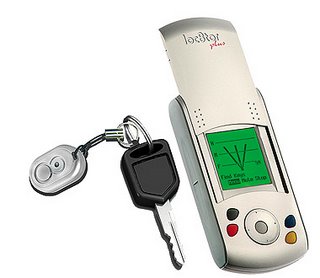Every question harbors a latent question: "Can it be done?" The answer is YES IT CAN.
" How: 8 Steps Toward Innovation" Brought to you by
IEEE, the world's largest technical professional association, connecting more than 365,000 members in 150 countries.
The tools provided by IEEE membership allow innovators to lead the world to new techincal developments, formulate internationally recognized standards, and shape the global community. Through its members, the IEEE has become a leading authority in technical areas ranging from computer engineering, biomedical technology and telecommunications, to electric power, aerospace and consumer electronics.
Beware the Would-Be Prophets
"The 'telephone' industry has too many shortcomings to be seriously considered as a means of communication. The device is inherently of no value to us." -Western Union's International Memo, 1876.
A Closed Mind Can Not Change
"Everything that can be invented has been invented"
-Charles H. Duel, Commissioner, U.S. Office of Patents, 1899
"What is power is I cannot say; all I know is that it exists and it becomes available only when a man is in the state of mind in which he knows exactly what he wants and is fully determined not to quit until he finds it."
-Alexander Graham Bell
Everyone knows that Alexander Graham Bell invented the telephone. But could he have done it alone? Prior research in acoustics and electricity preceeded Bell's breakthrough discovery, making Michael Faraday, who discovered electromagnetic induction, and Samuel Morse, the inventor of the telegraph, indirect contributors to the invention of the telephone.
An heir to this legacy of inherited knowledge, President of ArrayComm, Inc and IEEE Fellow, Martin Cooper built on Bell's legacy. With the invention of the mobile phone, Cooper has unraveled the lines of wireless communication.
"The key to innovation is the fearless pursuit of experiment, application and proof of the theory. IEEE allows engineers to see what is possible and pursue it with science." - Dr. Evangelia Micheli-Tzanakou IEEE Fellow, Director of Computational Intelligence Laboratories - Department of Biomedical Engineering Rutgers University
The imperative to create is beyond the scope of the individual. Every great idea builds on existing archetypes.Just as the computer did not precede the microchip, the motion detector did not precede the sensor. For every great ideas, there are millions of great individuals who saw beyond what was to see what is. And the vision of the farsighted transforms the existing landscape, making the impossible --- possible.
"Innovation is a complex process encompassing a wide range of activities. An essential ingredient is creative ideas, which originate from various sources. These represent the building blocks of the innovative process."
-Michael Bommer and David S. Jalajas "Innovation Sources of Large and Small Technology-Based Firms"
As engineers, inquiry and speculation are vital to our innovative process.
Research Development Progress
-three words encompassing years of setbacks, success, and finally an indescribable sense of accomplishment that accompanies the fruition of years of investigation.
What follows is a framework of the innovative process, to inspire researchers past the road blocks...8 ELEMENTS OF INNOVATION
1. CREATIVITY
2. KNOW-HOW
3. RELEVANCE
4. PLANNING & FOCUS
5. PRECISION & CONTROL
6. OBJECTIVITY
7. PERSERVERANCE
8. DIALOG
1. CREATIVITY
Eureka moments are spare and far between--unless you're looking for them. Passing thoughts sometime harbor the biggest breakthroughs. (Tap into these transient fantasies to open up a whole new perspective.)
2. KNOW-HOW
The creative imagination leads where the technical skill-set must follow.
In an age of continuous improvement, the "wouldn't it be great" ideas may already have supporting technologies. Keeping pace with the latest breakthroughs may bridge the juncture between theory and application.
3. RELEVANCE
Where will this innovation fit within the existing marketplace? The selling point of every technology lies in its one-upmanship over existing technologies. What sustainable advantages does this innovation introduce?
4. PLANNING AND FOCUS
Define a criterion for success -- measurable objectives that clearly outline your research goals.
Design empirical experiments that qualify and quantify the research results.
5. PRECISION & CONTROL
Troubleshooting is vital to conducting research. Testing several hypotheses provides valuable insight into what works. Adjustments to the process can save valuable research time and materials.
6. OBJECTIVITY
Detachment and clear-sightedness go hand-in-hand with innovation. Mentally polarize the intention of creation and the act of creating. Is there a better technology that might take our research further?
Be open to the possibilities that might drastically alter, but improve, your original plans.
7. PERSEVERANCE
Cling to the indefatigable strength of purpose that drove you to become an engineer.
Seek answers where they are only questions, and accomplish what can't be done.
8. DIALOG
The dialectic between theory and application is vital to innovation. Applications that bridge the gap between observed phenomenon, like ferro-electric current, and high-performance technologies, like Fe-RAM, revolutionize the technological landscape.
But communication is not bound to white paper. Consulting an expert or perhaps a peer who specializes in another field of interest may just *spark* that light-bulb moment.
While the elements of innovation are stepping stones in the innovative process, innovation is incomplete without forethought.
As innovators, the reliability and accuracy of your research is vital to protecting your investment. IEEE, a professional society whose vision is to advance global prosperity by fostering technological innovation, enabling memebers' career, and promoting community worldwide.



